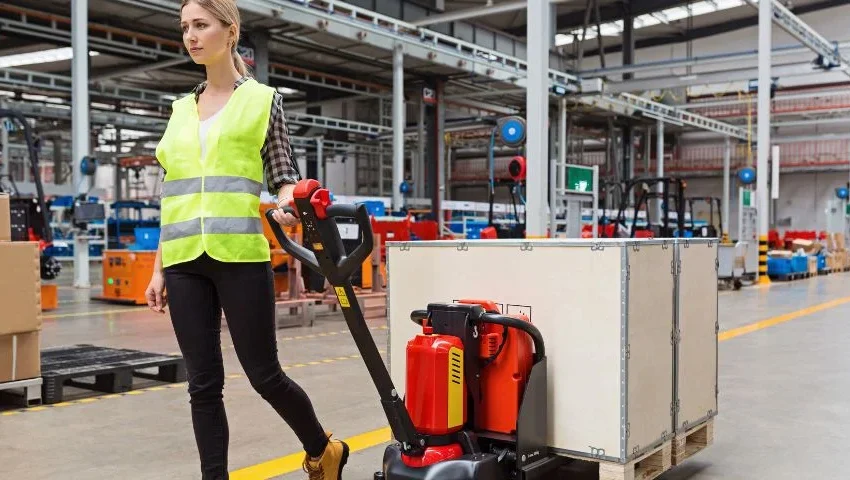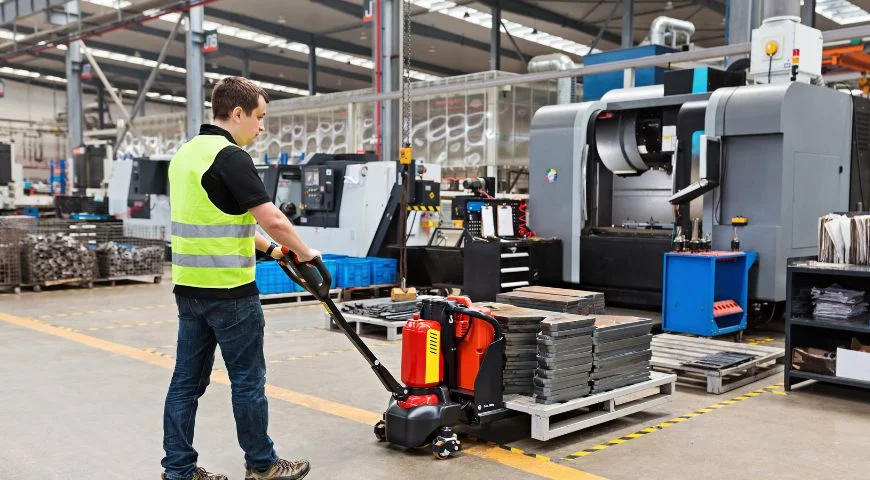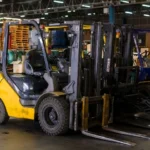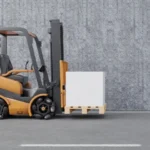
In the bustling logistics and warehousing sectors of India and the USA, efficient material handling solutions are crucial for smooth operations. Whether managing cargo in a busy port in Mumbai or a warehouse in Chicago, selecting the right equipment can dramatically influence productivity and safety. Two commonly used tools in material handling are the pallet jack and the powered pallet truck. Both are designed to move pallets efficiently but differ significantly in functionality, cost, and application.
This blog will guide you through the key considerations to help choose the best fit for your business needs, ensuring you optimize your processes while managing costs effectively.
Understanding the Basics: Pallet Jack vs. Powered Pallet Truck
Workers use a pallet jack, a manual tool, to lift and move pallets short distances. It is simple, cost-effective, and ideal for low-volume operations where workers don’t need to move pallets over long distances or handle heavy loads.

On the other hand, the powered pallet truck is a motorized version of the pallet jack, designed for heavier loads and longer distances. It incorporates battery power to assist operators, reducing physical strain and increasing efficiency in larger or more demanding cargo handling services.
Key Point 1: Application and Load Capacity
When choosing between a pallet jack and a powered pallet truck, consider the daily load volume and weight. Manual pallet jacks handle lighter loads and work best in small warehouses or retail stores with short travel distances.
For high-volume operations, such as container handling services or airport ground handling equipment activities, powered pallet trucks excel with their higher load capacity and ability to maneuver heavy goods effortlessly. This makes them invaluable for shipping companies in India and the USA looking to improve throughput while protecting worker safety.
Key Point 2: Cost and Maintenance
A pallet jack is a budget-friendly option with minimal maintenance requirements, making it attractive for startups or small-scale businesses. However, it requires physical effort from the operator, which can lead to faster fatigue and possible injury.
Powered pallet trucks involve higher initial investment and require periodic service and charging. Fortunately, companies offering forklift rental service, including forklift rental in Mumbai and other regions in India and the USA, often include annual maintenance contracts to ensure peak performance and longevity. This service also covers forklift spare parts and routine upkeep, optimizing operational expenses over time.
Key Point 3: Workspace and Environment Constraints
The physical layout and environment are crucial factors. Manual pallet jacks are compact and maneuver well in tight spaces, making them suitable for crowded warehouses or retail environments.
Powered pallet trucks need more space to operate efficiently because of their size and turning radius. They work best in open warehouses, shipping yards, and cargo terminals. In busy locations like Mumbai’s shipping companies or airport cargo zones, powered trucks boost productivity by covering large distances quickly and reliably.
Conclusion: Making the Right Choice for Your Material Handling Needs
Choosing between a pallet jack and a powered pallet truck depends on your operation’s size, load requirements, budget, and workspace. Companies with diverse material handling needs can benefit from partnering with reliable suppliers like Mazda Movers. They offer comprehensive forklift services, forklift truck sales, and tailored rental solutions. This ensures businesses in India, including Mumbai, and the USA get the right equipment for their needs.
Investing in the right equipment boosts efficiency, safety, and long-term cost savings. This is essential for thriving in today’s competitive logistics landscape. For updates on our products and services, follow Mazda Movers on Instagram, LinkedIn, and Facebook. Stay connected with us as we continue to power your cargo handling services with innovative, reliable solutions.





